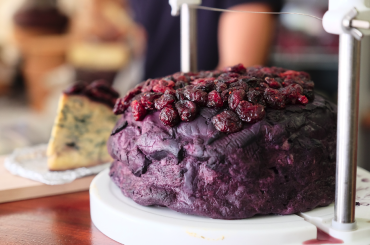
Sep232015by DishesOnly | News
Cheese 2015 is just concluded. It has been a successful edition attended by over 270,000 visitors in 3 days, from 18th to 21th of September. Bra, in the province of Cuneo, has held this international celebration. It has hosted over 300 exhibitors from 23 countries by promoting opportunities for education and entertainment, inspired by Slow Food values. This year’s event theme was focused on the mountain’s ecosystems related to cheesemakers. In the last fifty years many traditional cheesemaking activities have been stopped and pastures have been abandoned, with a lack of transmission of precious knowledge. So it seems urgent to protect the extraordinary biodiversity (of ecosystems, plant varieties, animal species, food and culture) found in the world’s mountain areas. But fortunately the mountains are still home to an incredible heritage of cheeses produced by artisanal techniques and the use of freshly milked raw milk. Products of extraordinary quality are the result of this process that involved the practice of transhumance (season migration to summer pastures). The Biodiversity Piazza is the place where visitors could taste mountain products from around the world. They have found cheeses, honey, vegetables and fruit, legumes and wild herbs grown on mountainsides all over the world: from the Andes to the Caucasus, via the Pyrenees, the Alps and the Apennines. Also a team of Slow Food network chefs prepared specialities associated with mountain traditions. Cheese 2015 offered an awareness and responsibility towards the related issues, such as animal welfare, sustainable management of landscapes, milk quotas and so on. Moreover it has represented a moment to bring together this consciousness with idea...
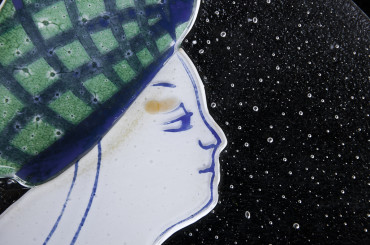
Aug312015by DishesOnly | News
When we think of glass, the mind leaps instantly to Venice, Murano and the gorgeous blown glass created there. What we perhaps don’t think of are the other techniques apart from glass blowing – like fusing, casting and glass sculpture, to name a few. The results of these applications are often surprising, such as when a glass plate appears to made of ceramic. To understand how this is done, we filmed Emanuela, one of the artisans at Studio Forme Roma, through the process of making a sculpted glass plate from our Bambù collection. The video below shows just how these objects of rare beauty are born. Sculpted glass “The process is complex; oftentimes the plate will crack in the kiln and the mold has to be thrown away and rebuilt from scratch each time”, explains Emanuela. “You start by making the mold out of clay and applying the pattern. Then you fill it with refractory material and when it’s dry, the clay is removed and the negative of the mold remains. This is filled with colored or clear glass and then put in the kiln at 900 degrees. Once it cools, the mold is thrown away and you have a flat slab of glass with the decoration incorporated. To give shape to the plate, the slab is placed in a concave mold and put back in the kiln at a lower temperature. At this point the plate is finished“. Interesting, right? If you agree, and you’d like to give someone a truly original gift, we have an idea for you: if you purchase a one-of-a-kind piece from...
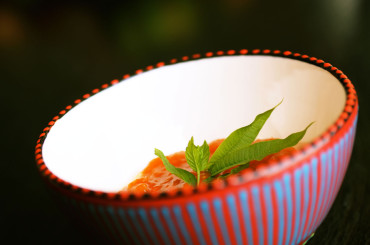
Jul132015by DishesOnly | News, Recipes
Yes, there really is a World Tomato Week, and it was celebrated at Expo 2015 from June 14-21 – in Italy, appropriately, the world’s third largest tomato producer. The tomato is the quintessential summer food. Its reassuring, refreshing presence accompanies practically every summer dish, and not just in Italy: garden salads, pasta and rice salads, insalata caprese, Greek salad, sandwiches, burgers, soups like gazpacho in Spain or Manhattan-style clam chowder in the States, tomato mousse, even tomato ice cream. And let’s not forget that summer brunch classic, the Bloody Mary – which, if you’ve never had one made from fresh tomatoes (peeled and seeded, of course) instead of processed tomato juice, you really need to try! Whether fresh, sundried or pureed, the tomato is as versatile as it is indispensable. Aptly called pomodoro in Italian (meaning ‘golden apple’), it is a concentration of dietary virtues: water, protein, organic acids, antioxidants, vitamins A and C, and practically no sugars (1%). It is the undeniable king of the Mediterranean diet. And thanks to its more than 1,000 varieties, people around the world can enjoy it throughout the year. Though let’s be honest, it’s always at its best in the summer. The list of tomato varieties can be broadly divided into salad tomatoes and sauce tomatoes, depending on factors like juiciness, pulpiness, skin thickness and flavor – which is more variable than you may think, in that some tomatoes taste better cooked than raw, while others should only be eaten fresh. The names are seductive in and of themselves: Perino, Pero d’Abruzzo, Regina, Costoluto Fiorentino, Pizzutello….. There’s the Camone, whose green ‘collar’...
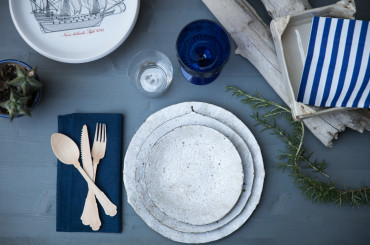
Jun242015by DishesOnly | News
During the summer, eating outdoors is a must and we are always looking for inspiration on how to set an eye-catching table for our gatherings. Here are three suggestions for your al fresco dinner parties and a checklist to set a summer casual table with casual dinnerware wherever your getaway is: at the seaside, on a lake, in the countryside, or in the mountains. Never forget: 1. KISS (keep it simple and straightforward) Don’t overwhelm your dining table with bulky centerpieces, flowers, candles, or other accessories such as napkin rings or place cards. Less is best. 2. No plastic! If you don’t want to wash dishes for the whole evening, use sustainable tableware such as palm leaves or paper that are really trendy and add warmth to your table. These are some suggestions: Eco or Wasara. Also do not use plastic for tablecloths, placemats or for any other accessories on the table. Use natural materials: linen, cotton, wood, plants and flowers. Metal may be used for a vintage feel. 3. Care for quality and details Chic equals beauty & elegance, and elegance is a matter of single little details. Preference should be given to artisanal tableware, handmade or hand painted plates and bowls, compared to industrial dinnerware. Iron the napkins if needed and follow the basic rules of the mise en place if you decide not to tie napkin and flatware together or to place them in other creative ways. After these general guidelines let’s switch to the “hands-on” section with a useful checklist when you are struggling with unexpected guests for an al fresco dinner; very few stress-free party tips...

May182015by Anna Laura | News
Passau is a pretty baroque town in Lower Bavaria – Germany – at the crossway of three famous rivers: Danube, Inn and Ilz. That is why it is also called Dreiflüssestadt or “City of Three Rivers”. Home of a notable University, the town is surrounded by rolling hills and forests. Driving up one of those narrow country roads, we reach Hans Fischer’s house where, until some times ago, you were welcomed by sheep, goats, chickens and a horse. Next to the house, in Hans’ workshop, there is always a coming and going: his five children visiting, students from all over the world attending Hans’ courses at the University of Passau, interns, customers buying ceramics, friends, other artists coming in for a beer (we are in Germany!) and conversing about art and philosophy. Time and space in this place assume a different dimension and meaning. Far from the frenzied cities but very close to Munich, where Hans often goes for his exhibitions, life has a natural rhythm. Hans is an eclectic and surrealist artist whose ceramic works range from dishes, to tableware to sculptures that are displayed in select museums and galleries. We catch up with Hans to better understand how he produces his beautiful ceramics and to understand important things to consider when buying a ceramic dish. “We start by making the clay, literally, as we buy raw clay nearby, mix it, then store it, as it is better when it has time to mature. Ceramic is completely made of natural materials, compared with Bone China that has synthetic elements in it. Resting time is also important: artisanal works take time!...
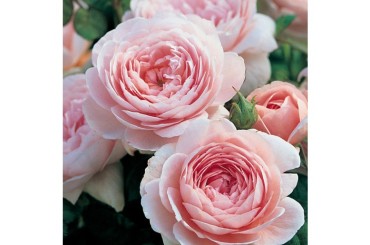
May72015by Anna Laura | News
“ If Zeus had willed it so Tha o’er the flowers one flower should reign a queen, I know, ah well I know The rose, the rose, that royal flower had been! She is of earth the gem, of flowers the diadem; And with her flush The meadows blush Nay, she is beauty’s self that brightens” Sappho, C.600 B.C. The rose may rank with the lily as the oldest of cultivated flowers. Unlike the chaste lily, which has only recently been intermarried, the rose is a wanton,very happy to be polled by others and bring forth new forms and colors to tease and delight her admirers. Rose became the flower most hybridized and “improved “by gardeners , so that the number of garden varieties on the nursery lists runs into thousand. And more are still being added year by year. In 2015 there are more than 13.000 names of roses!!!! According with the World Federation of Roses Societies the thousands of named roses are divided into three broad groups: –WILD ROSES: into this first group are included both the truly wild roses and those garden forms that are inseparably associated with them ( 150 -200 variants) –OLD GARDEN ROSES: groups of horticultural origin that were already estabilished prior to the year 1867, when“ La France” was seen to be the firts of what we now see as the Modern Roses. MODERN ROSES: the predominant roses of today that are still, unlike the Old garden roses, in active development by hybridists. WILD ROSES : numbering between 150 and 200, Wild Roses originated in the northern hemisphere, but now are...






